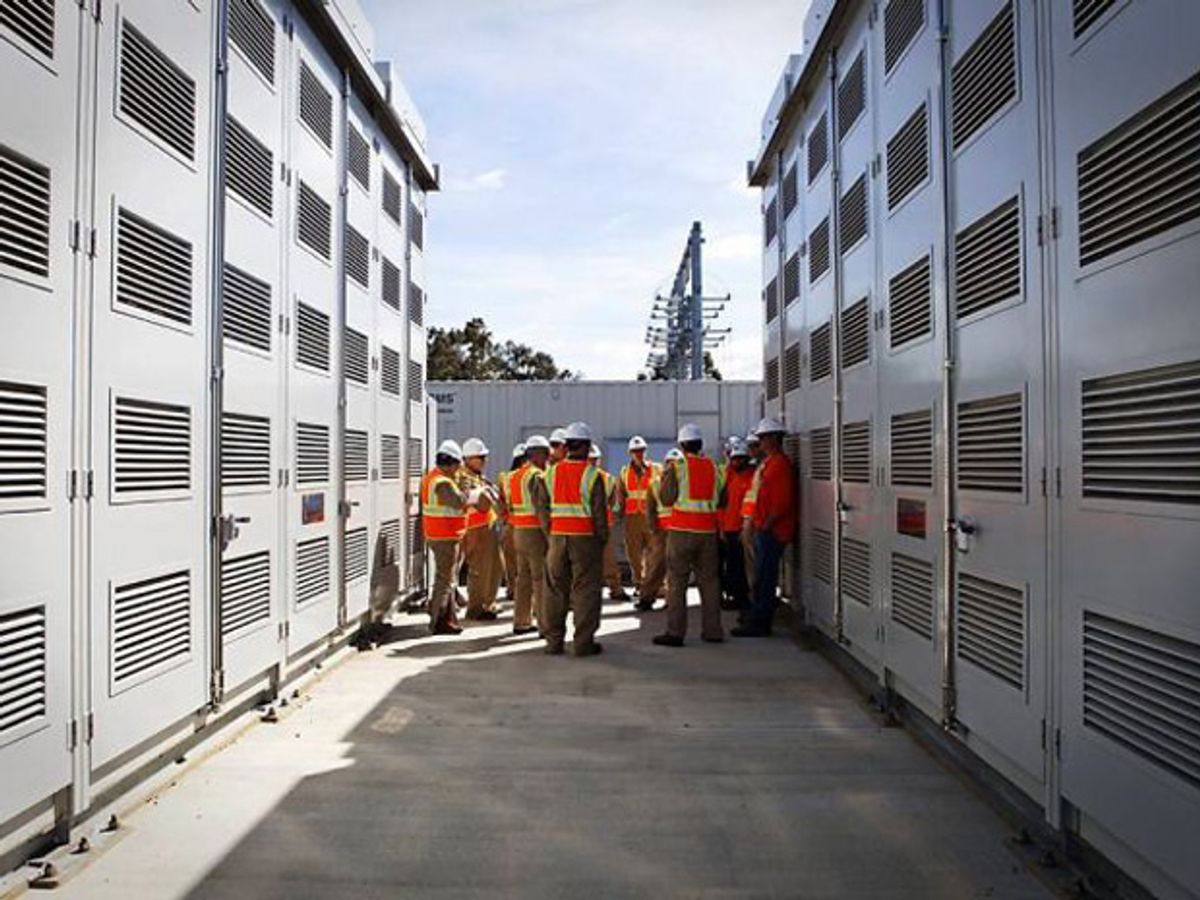California has adopted the United States' first energy storage mandate, requiring the state's three major power companies to have electricity storage capacity that can output 1325 megawatts in place by the end of 2020, and 200 MW by the end of next year. The new rule issued by the California Public Utilities Commission (CPUC) will be key to implementation of the state's ambitious renewable portfolio rules, which calls for 33 percent of delivered electricity to come from renewable sources by 2020 and virtually guarantees that California, along with Germany, will remain in the world vanguard of those aggressively building out wind and solar.
[Editor's note: For an explanation of why the mandate is expressed in units of power instead of energy follow this link.]
By common expert consent, wind and solar can only reach their full potential if storage is provided for, as otherwise little-used generating capacity must be held in reserve for the times the wind does not blow and the sun does not shine. California's landmark rule was written by Commissioner Carla Peterman, newly appointed to the CPUC late last year by Governor Jerry Brown.
"This is transformative," Chet Lyons, an energy storage consultant based in Boston, told the San Jose Mercury News, the state's most tech-savvy newspaper. "It's going to have a huge impact on the development of the storage industry, and other state regulators are looking at this as a precedent."
Though the new rule was adopted by the five CPUC commissioners unanimously, two expressed concerns about the strorage mandate's being achieved at reasonable cost to consumers, especially as large pumped storage (hydraulic) facilities do not qualify. There are a wide range of technologies that do qualify, including batteries and flywheels, but costs are generally high. Pike Research has concluded that the United States as a whole could have as much as 14 GW from storage by 2022, but only if storage costs come down to the vicinity of to about $700-$750 per kilowatt-hour.
This post was modified on 7 November for clarification.
Photo: PG&E



